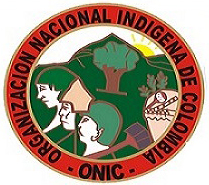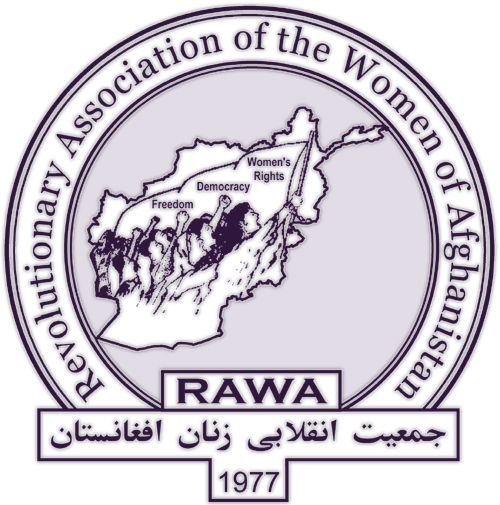Panama
Panama: Ngöbe-Buglé step up fight against dam
Silvia Carrera, the traditional leader (cacica) of Panama's indigenous Ngöbe-Buglé, announced on March 30 that she would present an appeal the next day to the Supreme Court of Justice concerning land expropriated for the controversial Barro Blanco dam. She said this would be part of a legal action against Law 18. Passed on March 26, 2013, the law allows the Public Services Authority (ASEP) to expropriate, evict and indemnify the population living beside the Tabasará river in the western province of Chiriquí, where the dam is being built. According to Ngöbe-Buglé activists, some 3,000 people will be relocated because of the project, which is now said to be 64% complete.
Panama, Nicaragua canal plans stalled
Construction of a interoceanic canal in Nicaragua has been delayed by a year and will "probably" begin in 2015. The head of the canal authority, Manuel Coronel Kautz, announced Jan. 4 that more time is needed to carry out feasibility studies and choose a route. President Daniel Ortega, who promotes the project as key to Nicaragua's "economic independence," had projected construction to start in May 2014. (BBC News, Jan. 4) The setback comes as Chinese workers brought in by HK Nicaragua Canal Development Investment Co Ltd are swelling the population of Brito, a small town projected as the canal's Pacific terminus, in Rivas department. (IBT, Dec. 12)
Panama ups ante in Nicaragua canal race
The current expansion of the Panama Canal will allow close to 90% of the world's 370-vessel liquified natural gas (LNG) fleet to pass through by 2015, the Panama Canal Authority announced Oct. 30. Currently the canal can accommodate only 8.6% of the global LNG fleet. Voyages to Asia from the US will cost 24% less than longer routes, according to the authority. The US, now the world's top natural gas producer due to extraction from shale rock, is projected to become the third-largest LNG exporter by 2020. Excavation to double the Panama Canal's capacity, which began in 2007, is said to be 64% complete. (Bloomberg, Nov. 4; Platts, Oct. 30; IBT, Sept. 20)
Wanted by Italy, ex-CIA agent is released to US
After being detained for a day or two by Panamanian authorities on a request from Interpol, retired US Central Intelligence Agency (CIA) station chief Robert Seldon Lady was released on July 19 and placed on a plane bound for the US. In 2009 an Italian court sentenced Lady in absentia to nine years in prison for the Feb. 17, 2003 kidnapping of Osama Moustafa Hassan Nasr, an Egyptian-born Muslim cleric and suspected terrorist also known as Abu Omar, on a street in Milan. Although 22 other US citizens were convicted in the kidnapping case, Italy has only been seeking Lady, who headed the CIA's Milan station; the others received lighter sentences that don't warrant extradition requests under Italian law.
Leaks show massive US spying throughout Americas
US intelligence agencies have carried out spying operations on telecommunications in at least 14 Latin American countries, according to a series of articles the Brazilian national daily O Globo began publishing on July 7. Based on classified documents leaked by former US intelligence technician Edward Snowden, the articles reported that the main targets were Brazil, Colombia and Mexico. The US also spied "constantly, but with less intensity," on Argentina, Chile, Costa Rica, Ecuador, El Salvador, Honduras, Nicaragua, Panama, Paraguay, Peru and Venezuela, the newspaper said. Brazil and Colombia, a major US ally, have both officially demanded explanations from the US.
Panama: campesinos demonstrate against dams
Members of 27 campesino communities in the San Francisco district of Panama's western Veraguas province held a protest on June 7 to demand the cancellation of permits given for the construction of the Lalin 1, Lalin 2 and Lalin 3 hydroelectric projects on the Gatú river. The protesters charged that there were irregularities in the environmental impact studies for the dams. They also said that they hadn't been consulted on the projects and that the companies involved were ignoring an order from San Francisco's mayor to suspend construction. The communities proposed the promotion of cooperatives, ecological tourism and farming based on ecological principles as alternatives to what they consider the government's bad development policies. The demonstration ended without incident, although the protesters complained about the presence of investigative and anti-riot police. Veraguas' governor agreed to start negotiations with the campesinos. (Radio Temblor, Panama, June 7)
Panama: Ngöbe-Buglé leader murdered after anti-dam protest
Onésimo Rodríguez, a leader in Panama's Ngöbe-Buglé indigenous group, was killed by a group of masked men in Cerro Punta, in western Chiriquí department, the evening of March 22 following a protest against construction of the Barro Blanco hydroelectric dam. Carlos Miranda, another protester who was attacked along with Rodríguez, said the assailants beat both men with metal bars. Miranda lost consciousness but survived; Rodríguez's body was found in a stream the next day. Miranda said he was unable to identify the attackers because it was dark and their faces were covered. Manolo Miranda and other leaders of the April 10 Movement, which organizes protests against the dam, charged that "the ones that mistreated the Ngöbes were disguised police agents."
Panama: Ngöbe-Buglé renew anti-dam protests
Some 80 indigenous Ngöbe-Buglé activists blocked access to the Barro Blanco hydroelectric dam construction site in Panama's western province of Chiriquí for about three hours on March 8. Riot police dispersed the protesters with tear gas, and the next day police agents arrested four Ngöbe-Buglé. Ricardo Miranda, a spokesperson for the April 10 Movement, which opposes construction of the dam, told a March 11 press conference that the police threatened the detainees and beat them with nightsticks. Miranda, who offered photographs of injured detainees as evidence of the beatings, also charged that the police violated the autonomy of the Ngöbe-Buglé territory by making the arrests. Chiriquí police commissioner Luis Navarro denied that the detainees were mistreated.















Recent Updates
9 sec ago
5 hours 24 min ago
8 hours 22 min ago
2 days 2 hours ago
2 days 4 hours ago
3 days 9 hours ago
3 days 9 hours ago
3 days 9 hours ago
5 days 27 min ago
5 days 33 min ago